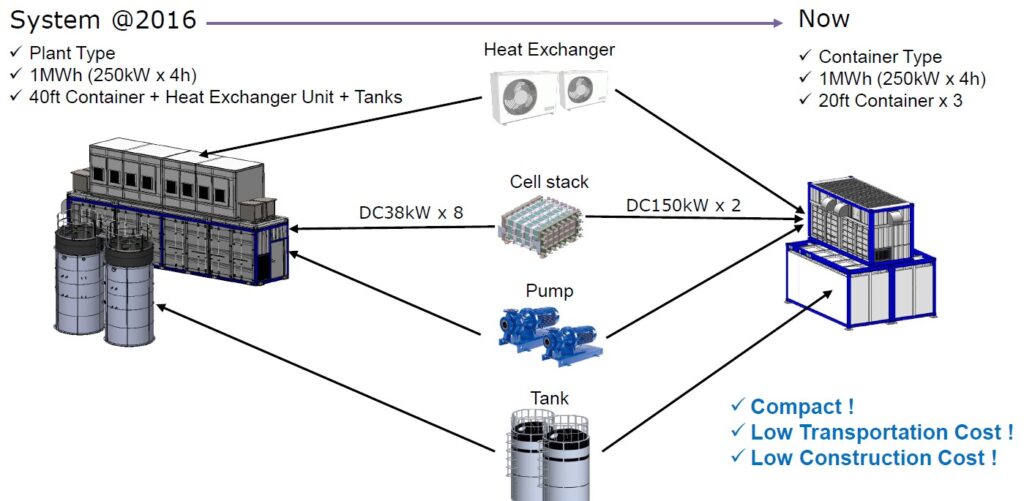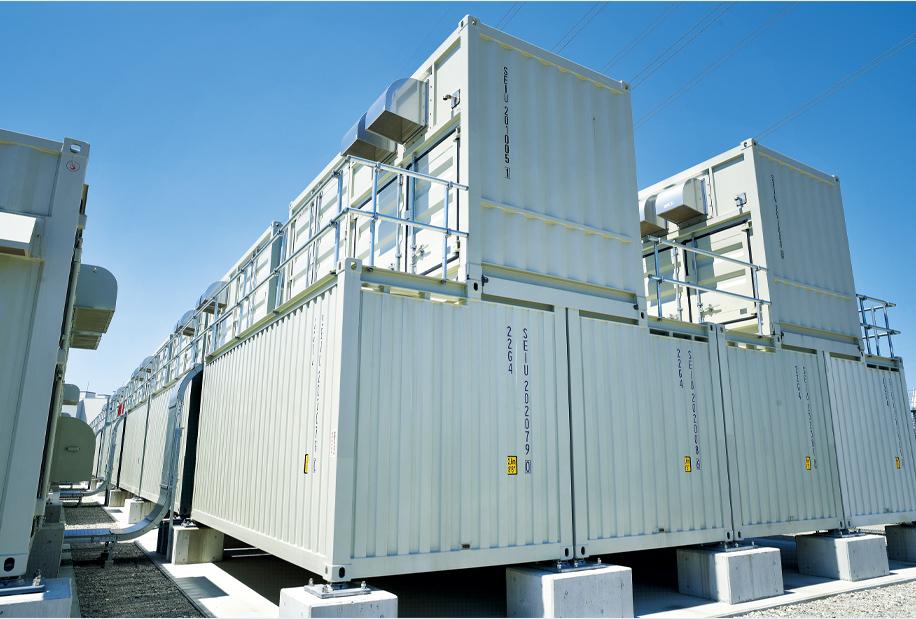The Future of Energy Storage: How Flow Batteries are Revolutionizing Renewable Energy Integration
As the global shift toward renewable energy accelerates, energy storage solutions are becoming increasingly critical. Traditional power grids, designed for steady, predictable energy generation, now face challenges due to the intermittent nature of renewable sources like solar and wind. Among the various technologies being developed to address these challenges, flow batteries stand out as a promising solution for large-scale energy storage, offering long-lasting, efficient, and environmentally friendly options.
1. The Evolution of Flow Battery Technology
The history of flow battery technology can be traced back to the mid-20th century when researchers first demonstrated their potential for energy storage. However, it wasn’t until the development of vanadium redox flow batteries (VRFB) in the 1980s that the technology began to show significant promise for commercial applications. Unlike traditional batteries, which store energy in solid materials, flow batteries use liquid electrolytes stored in external tanks. These electrolytes are pumped through a cell stack, where they undergo redox reactions to store or release energy.
One of the leaders in commercialising this technology is Sumitomo Electric Industries (SEI), which has been a pioneer in deploying VRFB systems around the world. SEI’s extensive experience has played a key role in proving the reliability and scalability of flow batteries for large-scale projects.

2. Flow Batteries: A Global Energy Storage Solution
Flow battery systems are now being deployed worldwide to support renewable energy integration, stabilize power grids, and provide backup power for a variety of applications. These systems range from small installations for local energy storage to large-scale deployments that help manage fluctuations in renewable energy generation.
One of the largest-scale implementations of this technology is led by Sumitomo Electric Industries, with over 49MW of capacity across 41 projects globally, totaling 173MWh of energy storage as of 2024. These projects span several continents and demonstrate the technology’s adaptability to different energy markets and grid requirements.
Examples of Installations:
- Grid Balancing and Renewable Energy Integration: In Japan, SEI’s largest installation, a 60MWh system, is helping balance the energy supply from wind and solar sources on the Hokkaido Electric Power Network. This system provides both short-term and long-term energy storage to smooth out fluctuations in renewable power generation.
- Microgrid Support: Flow batteries are being deployed to support microgrids in areas with unreliable grid connections. For example, in California, SEI’s 8MWh system supports San Diego Gas & Electric by providing backup power and participating in the local energy market. This project also supports the microgrid’s role in peak shaving and frequency regulation.
- Energy Trading and Market Integration: SEI’s systems are also being used to trade energy on wholesale markets. An installation in Kashiwazaki, Japan provides 8MWh of energy storage to manage power from both solar and the broader energy market, ensuring effective use of local renewable resources.
3. Key Features of Flow Batteries
Flow batteries offer several advantages over other types of energy storage, such as lithium-ion batteries, making them particularly well-suited for large-scale, long-duration energy storage applications:
- Long Lifetime: Flow batteries are known for their exceptionally long operational lifespan, often exceeding 20 years. Unlike other battery types that degrade with each charge and discharge cycle, flow batteries maintain their capacity because the energy storage mechanism involves changes in the valence states of the electrolyte, not in the solid components of the battery. Sumitomo’s commercial installations have demonstrated the durability of this technology in real-world applications.
- Unlimited Charge-Discharge Cycles: One of the key advantages of flow batteries is their ability to undergo unlimited charging and discharging cycles without significant capacity degradation. This makes them ideal for applications requiring frequent cycling, such as grid frequency regulation or renewable energy storage.
- Eco-Friendly: The electrolytes used in flow batteries are often non-toxic and recyclable. Additionally, flow batteries have a high recycling rate for their components, making them an environmentally sustainable option for energy storage. SEI’s commitment to sustainable energy storage is evident in its efforts to establish localized electrolyte production in regions such as Australia, reducing costs and environmental impact.
- Fire Safety: Unlike other battery technologies that can suffer from thermal runaway and pose fire risks, flow batteries are inherently safe. The liquid electrolytes are non-flammable, and the system operates at ambient temperatures, minimizing the risk of overheating or fire.

4. Applications of Flow Batteries: Versatile Solutions for a Changing Energy Landscape
Flow batteries are highly adaptable and can be used in a variety of contexts, from stabilizing large power grids to providing reliable energy for remote areas. Here are some key use cases:
Grid-Scale Energy Storage and Frequency Regulation
In regions with a high penetration of renewable energy, flow batteries help balance supply and demand by storing energy when production exceeds demand and releasing it when renewable generation drops. This is particularly important for managing short-term fluctuations in wind and solar energy output. By regulating frequency and providing reserve power, flow batteries help maintain grid stability and ensure a consistent energy supply. The 60MWh installation by SEI in Japan stands as a prime example of grid-scale implementation.
Wind and Solar Firming
One of the main challenges of renewable energy is its intermittent nature. Flow batteries are increasingly being used to “firm” renewable energy by providing a steady output even when generation fluctuates. For example, wind farms can store excess energy generated during high-wind periods in flow batteries, which is then released during times of lower wind speeds. Sumitomo’s deployment of 51MWh systems for wind power integration in Japan demonstrates the potential for flow batteries to support renewable energy reliability.
Microgrids and Localized Energy Storage
In areas where access to the main grid is limited or unreliable, flow batteries provide a reliable and sustainable energy source. These systems can be integrated with local renewable energy sources, such as solar panels or small-scale wind turbines, to create self-sufficient microgrids. In the event of a grid outage, flow batteries can maintain power to essential services, making them ideal for critical infrastructure or remote communities.
Energy Trading and Market Participation
In some regions, flow batteries are being used not just for energy storage but also for participating in energy markets. By storing energy when prices are low and discharging when prices are high, these systems can help stabilize the market while providing economic returns to operators. This application is particularly valuable in markets with volatile energy prices or significant renewable energy capacity, as demonstrated by SEI’s projects in Japan and the United States.
5. Environmental Sustainability: The Circular Economy of Flow Batteries
One of the most exciting aspects of flow battery technology is its potential for sustainability. Unlike traditional batteries, where the electrolyte degrades over time, the electrolyte in flow batteries remains stable for decades. This means that even after 20 or more years of operation, the same electrolyte can be reused in new systems, making flow batteries a cornerstone of the circular economy.
In addition to the longevity of the electrolyte, most of the materials used in flow batteries are recyclable. After decades of use, the system can be disassembled, with over 99% of the materials being recycled or repurposed. This dramatically reduces the environmental impact of energy storage and ensures that flow batteries contribute to a sustainable energy future. Sumitomo’s efforts in this area highlight the importance of creating closed-loop systems for energy storage technologies.

6. Localising Production for Global Impact
As the adoption of flow battery technology grows, companies are increasingly localising the production of key components, such as electrolytes. By producing these materials closer to the sites where flow batteries are deployed, companies can reduce costs, improve supply chain resilience, and decrease the environmental impact of transportation.
For example, Sumitomo Electric Industries has partnered with Vecco Group to produce electrolyte locally in Australia, where they are deploying flow battery systems to support solar energy integration and energy trading with Energy Queensland and Energex. This localised approach not only supports the renewable energy market in Queensland, Australia but also demonstrates the scalability of flow battery technology across different regions and energy markets.

7. The Future of Flow Battery Technology
As the world continues to shift toward renewable energy, the need for reliable, long-duration energy storage will only increase. Flow battery technology is poised to play a significant role in this transition, offering a scalable, sustainable solution for large-scale energy storage needs.
With ongoing advancements in efficiency, cost reduction, and recycling capabilities, flow batteries are set to become a mainstream energy storage solution in the coming years. Their ability to stabilize grids, support renewable energy, and provide economic value through market participation makes them a key technology for the future of energy.
As demonstrated by SEI’s projects, flow batteries have already proven their value in diverse applications, from grid stabilization to microgrid support. As governments and industries worldwide commit to reducing carbon emissions and increasing renewable energy use, flow batteries will be an essential part of the energy storage landscape, helping to ensure a stable and sustainable energy future.
